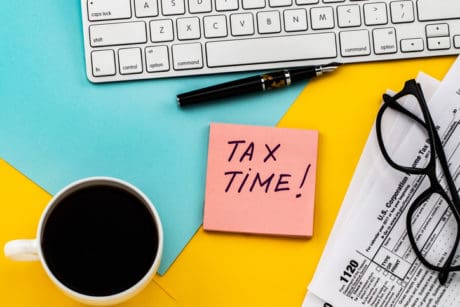 Some people love the Olympics and count the number of years until they will get to once again cheer on team USA. As a self-professed political junkie I sit in anticipation for a different type of sport that occurs every four years. I of course am speaking of the Presidential election season.
Some people love the Olympics and count the number of years until they will get to once again cheer on team USA. As a self-professed political junkie I sit in anticipation for a different type of sport that occurs every four years. I of course am speaking of the Presidential election season.
While watching the Democratic presidential debate late last week, former Vice President Joe Biden said something that caught my attention. He said if elected he would push to double the capital gains rate currently sitting at 20% to just under 40%. Before you stop reading, know I won’t be commenting on whether this proposal is wise or not. I’ll leave that to political pundits, and policy wonks.
Instead, my goal will be to arm you with information that will allow you to keep more of your hard earned money if such a tax increase were to go into effect. However, even if it doesn’t, these tactics will also work at current capital gains rates too.
Before we dive into this topic, a brief description of exactly what capital gains are, and who has to pay them, seems appropriate. Capital gains are the difference between what an individual pays for an asset and what they sell it for. While for most people, this represents market investments held in non-retirement accounts, it can also apply to gains you realize on homes, businesses, collectibles etc.
For example, let’s say at some time in the past you purchased 100 shares of Apple stock at the low price of $100 a share. And now several years later you decide to sell those shares for $225 a share. The capital gains for each share would be the difference between the original purchase price and the sale price, in our example that would be $125 per share. Under our current tax code if you sold those shares you would owe tax on the $12,500 in total gains back to the IRS. Therefore, if you are currently paying 20% and the capital gains rate doubled the amount you would owe in the previous example would go from $2,500 up to roughly $5,000.
There are ways however for individuals to avoid these taxable gains. The most common way is through a process called tax harvesting. While it might sound complicated, it is simply the action of selling investments that have losses in value in order to offset gains that have been realized in others.
Using the example above, let’s say at the same time you purchased the Apple stock well below its current value, you also purchased 1000 shares of JC Penny at a price of $10 a share. With the value of the former retail giant now only $1 a share you might choose to sell those shares producing a loss of $9,000. By doing so. You are able to reduce the total amount of gains you had from $12,500 down to $3,500.
As part of the service we provide we generally do tax harvesting for our clients with taxable gains each December to ensure they don’t get an unexpected bill from the IRS in April. If you’re not sure if your advisor is doing this, you should contact them and ask. Depending on the positions you hold and their performance your tax liabilities could be greatly impacted.
Another way you can avoid paying capital gains tax on your investments is to donate assets directly to a non-profit organization. Referring back to the previous example, rather than selling the shares of the Apple stock and incurring a large gain, you are permitted to donate those shares directly to a church, or non-profit like Truman Heartland Community Foundation. By doing this, the gains in the investment are never received by you and are therefore not taxable. Yet you still receive the ability to deduct the value of the shares from your federal income tax. This is what I like to refer to as a win-win. You receive all of the potential tax benefits of making the donation and none of the tax liabilities incurred by selling the investment.
I know October seems early to already be thinking about your end of year tax strategy, but by being prepared and putting some planning in place now, you can hopefully enjoy your holiday season knowing you’re going to give as little as possible to Washington.
